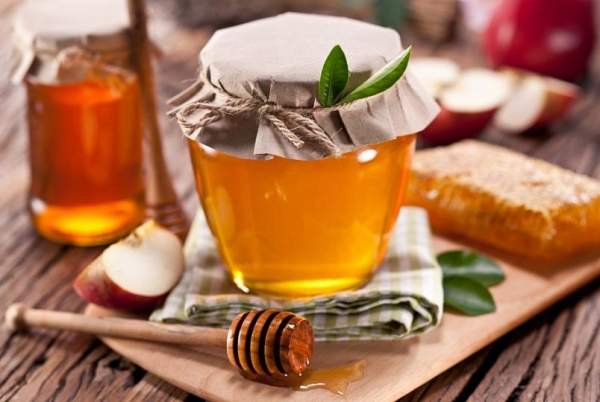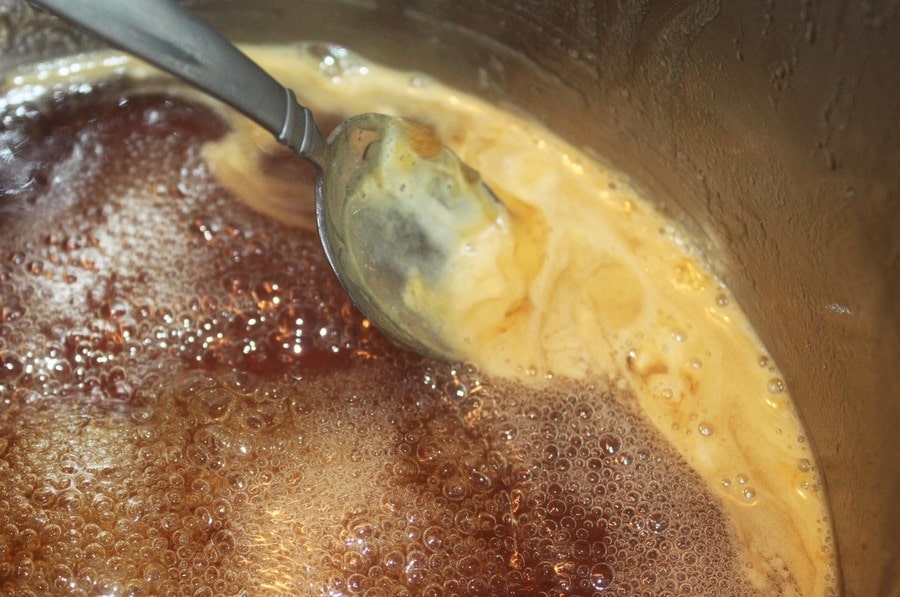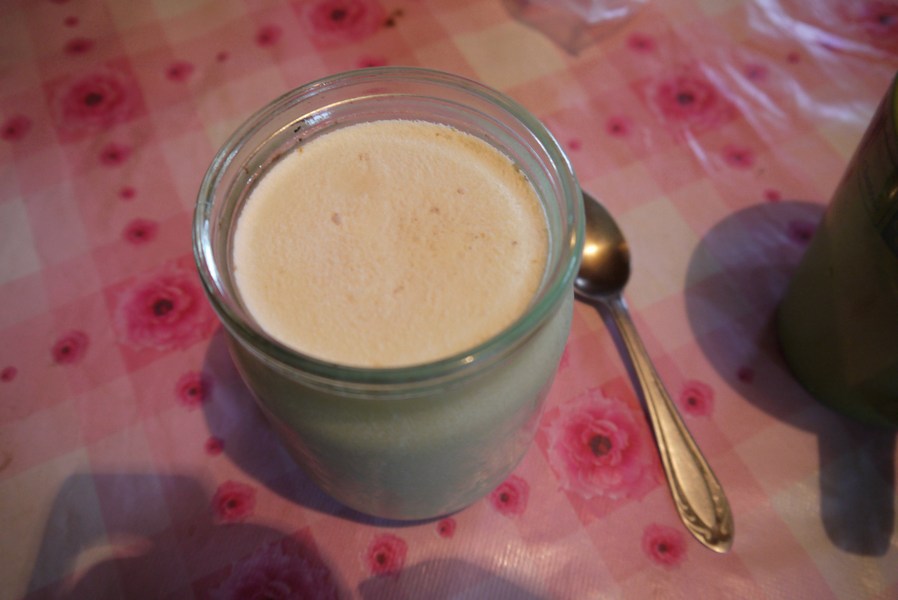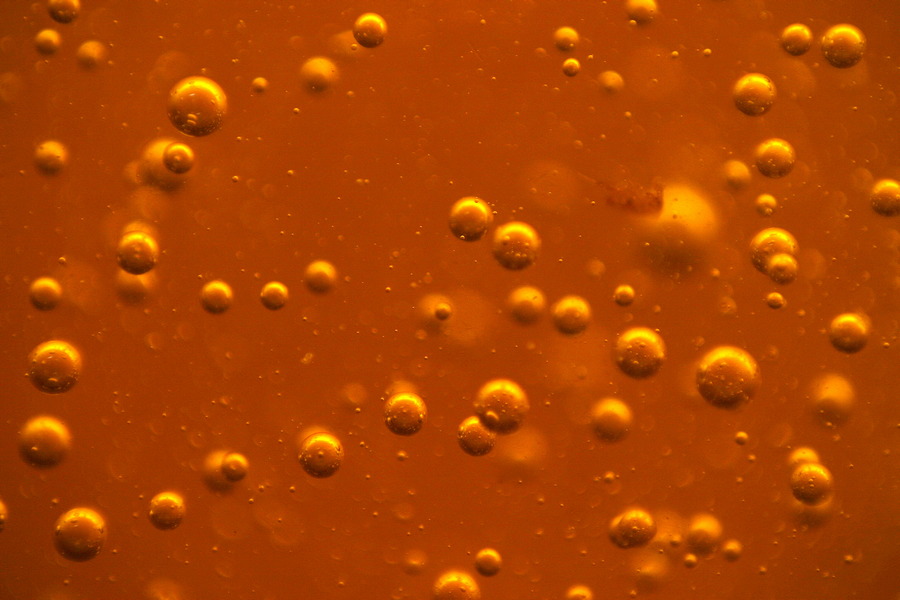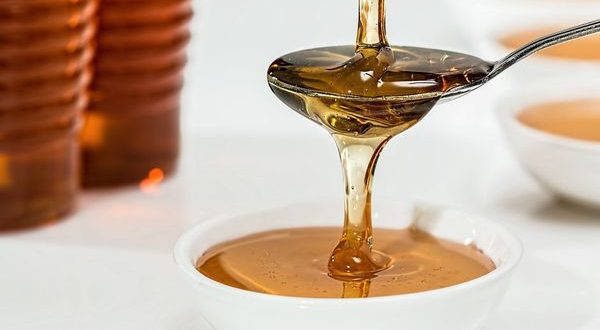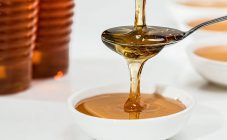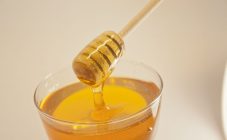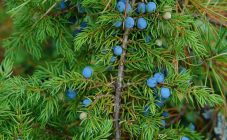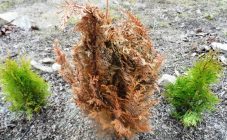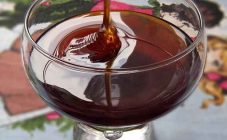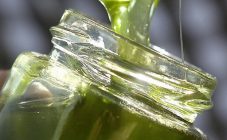Content:
The process of making honey itself is very complex and unique. Summer bees work from morning to night to collect enough nectar for the hive. There, the extracted stocks are ventilated to reduce the amount of moisture, are placed in honeycomb cells, and only then, after a certain time, the finished honey is sealed. But there are problems in collecting and transporting honeycombs from the hive. Questions often arise: why does a white foam form on honey, from what does a film appear on honey?
Honey: description, composition, types
Honey is a sweet, thick product. Its taste depends on the plant from which the bees collected pollen.
Composition of honey:
- natural sugars: glucose, fructose, sucrose and others;
- water;
- vitamins: B2, B3, B5, B6, B9, C;
- folic acid;
- carotene-A;
- metals: calcium, magnesium, zinc, iron, sodium;
- phosphorus;
- enzymes (decompose when the product is heated) and much more.
The main types of honey:
- lime - light yellow, soft and fragrant;
- buckwheat - dark red, very rich taste;
- sunflower - late, slightly tart;
- sweet clover - milky white, amber, creamy, vanilla smell;
- acacia - the earliest species;
- honeydew - made not from pollen, but from aphids and plant secretions.
The honey collection process is quite complicated. You need to follow instructions and rules to get a competitive high quality product. There are 2 main methods of extracting honey: from honeycomb and extraction. Experienced beekeepers prefer the first option, while for beginners it is easier to use the second.
Why honey foams on the surface: what causes air bubbles in honey
There are many reasons why honey can change its consistency. There are factors that affect only the appearance, without affecting the taste or smell of the product. There are others who turn bee sweetness into a harmful product. From what honey drink can foam - further.
Filtration defect
This is one of the most harmless causes of foam on nectar. It occurs when, during the filtration of the product through a sieve, together with it, bee crumbs, pieces of wax, pollen, and parts of the bodies of the bees themselves manage to squeeze. Foam on honey - what is it? This is nothing more than a nectar self-purification process.
Why can foam appear after filtration:
- Incorrect sieve. Not all products have a standard hole size, so before buying, if in doubt, it is better to consult with the seller. If there are too large holes in the sieve, honey foaming will occur.
- Low-quality material was used to make the filter. Often, beginners who are just starting to breed bees do not realize the importance of purchasing high-quality, expensive materials, which leads to contamination of the product with foreign particles.
- Carelessness of the beekeeper. The human factor also affects the quality of the collection.
To prepare such honey for use, you just need to clean the top layer of this debris with a knife or spoon. All the beneficial properties of sweetness, as well as taste and smell, will remain intact.
Unripe honey
Sometimes there is an urgent need to collect the amber product ahead of time. And it is not uncommon for honey to foam after harvesting - what is it? Foam appears on an unripe product due to its high humidity. The moisture content in raw honey is 1-2% higher than the norm.
Responsible beekeepers allow it to mature, keeping it for about a month in an airtight container at a temperature not exceeding 20 ° C. But, even if the buyer purchased unripe honey, he can let it ripen on his own. Just do not be surprised if the purchased bee product has completely or partially foamed.
Air bubbles
Why do bubbles appear in honey? Often, the mass begins to bubble after frequent transfusions from different containers or long stirring. When honey is poured, it is filled with nitrogenous compounds, which spread in the form of bubbles throughout the entire honey mass. During storage, such honey will not deteriorate and will not lose its useful properties.
Increased glucose
This indicator depends solely on the type of honey and does not in any way affect its taste. White foam forms on honey - what is it? Just an excess of glucose compounds. Before use, remove the top layer with a spoon and stir until smooth. Such nectar must be stored in special conditions, as it deteriorates much faster than usual. This will require a tightly closed container and a temperature no higher than 15 ° C.
Fermentation
Both fake and natural products are susceptible to nectar fermentation. The process is provoked by yeast fungi. Natural nectar is more resistant to them than a fake. It is best to fight fermentation even before its onset, namely, to store sweetness correctly, without disregarding all the rules. In conditions of high temperatures or high humidity, even the highest quality nectar will not withstand adversity. What will happen to him? The most harmless thing is the foam dome on top, this will mean that the fermentation process has begun.
Fake product
Counterfeiting means the following.
Sugar honey
It is produced by bees in the same way as the usual one, but it has much less nutrients and nutrients than the flower. Sugar nectar appears when the beekeeper begins to constantly feed his hunters sugar syrup. The syrup accelerates the mechanisms of amber production in bees, due to which the amount of honey increases several times, and the quality decreases. If you mix it, for example, with a flower one, then the catch will not be found even in special laboratories!
Artificial honey
Very often, a fake is imported from China. And in appearance, as well as in taste, it is very difficult to distinguish it from the real one. Chinese craftsmen try to reproduce both the consistency of the product and its taste with precision. The only thing that will strikingly differ from the real Chinese honey is the complete absence of useful and medicinal components.
Natural honey with additives
The method of diluting a natural product with foreign impurities is especially popular when faking honey. The most harmless additive can be high-density sugar syrup, which is tinted to match the color of honey using food dyes or tea. Those who do not care about the health of buyers use hazardous substances to make the honey sold even more cheaper. Since sugar is also not cheap, it is replaced with a variety of substances that, even in small doses, are dangerous to the body.
Honeydew honey
Pad is an organic substance that can be of 2 types. There is a pad of animal origin - this is what parasitic insects produce during their life. For example, such insects include aphids and similar beetles that live on plants. Their feces are the very same animal pad.
The second type is a pad of vegetable origin. Bees collect this viscous mass from special trees, the shoots and leaves of which can secrete a sweetish liquid - honeydew. It is abundantly produced by conifers, oaks, willows, cherries, ash trees, plums, apple trees and maples. Both externally and taste, these secretions are very similar to bee nectar.
In fact, honeydew honey is not an outright fake. It even contains more trace elements than regular nectar. Its use is recommended for children with a weakened body, due to anemia, as well as in the postoperative period. Before using, be sure to consult with your doctor.
Melted honey
Like all of the above counterfeits, it is processed by unscrupulous sellers by exposure to high temperatures. After such a process, honey loses all its useful properties and deteriorates much faster than natural honey, which provokes the appearance of foam and other negative substances.
How to avoid foam on amber nectar
All of the above reasons for the appearance of foam and foreign sediments in honey can negatively affect not only its taste, but also harm the body with prolonged use. Storage rules for purchased honey will prevent spoilage and fermentation and preserve it for several years. By observing these requirements, you can forget about foam, bubbling and other problems with nectar forever.
- Temperature. It is very important to store honey at the correct temperature. The most optimal is from -5 ° С to 20 ° С. When storing a product at room temperature, it is often encountered with the fact that it quickly deteriorates and exfoliates. It is equally important to observe the same temperature regime, without moving the sweet syrup from a warm place to a cold one. Changes in temperature will negatively affect the appearance of the product and uneven crystallization.
- Capacity. Choosing the right storage capacity is just as important. A jar with tinted glass and a tight lid are best suited for this. Ceramic and enameled dishes are slightly inferior in quality. The worst option of all is plastic. Before placing honey in a container, wash it with laundry soap and rinse with plenty of water.
- Air humidity. Considering the ability of honey to absorb moisture from the environment in very large quantities, it should be minimal in the place of its storage. Otherwise, it will become liquid and spoil faster.
- Lighting.Direct sunlight is very harmful. Even through darkened glass, they are capable of destroying most of the nutrients, so the best place would be a dark corner, where the sun rarely looks, and it is better not to look at all.
- Smells. Another distinctive feature of honey is that it is able to absorb odors. Therefore, its proximity to strongly smelling products or materials is highly undesirable.
How to choose honey so as not to run into foam, bubbles, fermentation and counterfeit
To do this, take into account that:
- the consistency of the goods must be uniform. If you scoop up a quality product with a spoon, it will drain in a uniform stream and form a slide on the surface;
- visually good honey should be transparent, homogeneous, thick, without precipitation, without turbidity and stratification;
- the taste should be tart and without pronounced sourness;
- just a drop of honey, rubbed with fingers, will reveal the presence of impurities, if it is not completely absorbed into the skin, but will roll down in lumps on the fingers;
- a natural product contains a bright floral aroma, therefore, the less it smells, the more it is diluted;
- in summer, the consistency should be syrupy, and crystallized in winter.
You always need to carefully approach the choice of products for households, because honey, like other bee products, will be useful only with high-quality collection, maturation and storage. A counterfeit or simply spoiled product threatens not only loss of money, but also harm to the body. Observing the above recommendations, you can easily distinguish real and high-quality honey in three counts.
